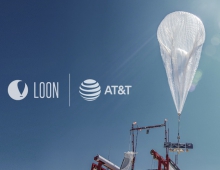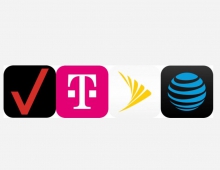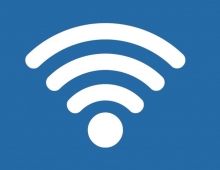
AT&T, Verizon Among Winners Of US Airwaves Auction
The FCC today announced results of its auction of AWS-3 spectrum, unveiling that AT&T spent close to half the total spending, while Verizon Communications and bidding partners of Dish Network also spending heavily.
The auction involved Advanced Wireless Service licenses in the 1695-1710 MHz, 1755-1780 MHz, and 2155-2180 MHz bands, 65MHz in all.
AT&T bid a total of $18.2 billion to win licenses of so-called AWS-3 spectrum; Verizon bid $10.4 billion and T-Mobile US bid $1.8 billion, according to the results released by the Federal Communications Commission.
Dish itself did not win any licenses, but it had joint bidding agreements with SNR Wireless LicenseCo LLC and Northstar Wireless LLC, in which it has indirect ownership interests. Those two companies bid a total of $13.3 billion, but had applied to receive a discount as small-business entities, bringing their net bid amount to $10 billion.
The record $44.9 billion auction demonstrated the great interest of wireless carriers and other companies for spectrum essetial for the delivery of mainly of video.
AT&T acquired licenses for a contiguous 10x10 MHz block of AWS-3 spectrum. As a result of the acquisition, AT&T now covers 96 percent of the U.S. population with contiguous AWS-3 spectrum.
"Growth in our customers' mobile data usage continues to explode, driven by mobile video traffic. This spectrum investment will be critical to AT&T staying ahead of customer demand and facilitate the next generation of mobile video entertainment," said John Stankey, chief strategy officer-AT&T.
AT&T plans to work with network and handset suppliers, and industry standards bodies to deploy the spectrum beginning in the 2017-2018 period.
Verizon Communications Inc. has won a total of 181 licenses with an aggregate bid price of $10.4 billion. These licenses are in markets covering 192 million POPs, or 61 percent of the United States.
Sprint, the third-largest U.S. carrier, skipped the AWS-3 auction. But it is expected to bid on the low-band frequency.
Next year, the commission also plans to auction broadcast TV spectrum in the 600MHz band. T-Mobile needs some of this low band spectrum to improve its network's ability to cover long distances and penetrate building walls.
AT&T bid a total of $18.2 billion to win licenses of so-called AWS-3 spectrum; Verizon bid $10.4 billion and T-Mobile US bid $1.8 billion, according to the results released by the Federal Communications Commission.
Dish itself did not win any licenses, but it had joint bidding agreements with SNR Wireless LicenseCo LLC and Northstar Wireless LLC, in which it has indirect ownership interests. Those two companies bid a total of $13.3 billion, but had applied to receive a discount as small-business entities, bringing their net bid amount to $10 billion.
The record $44.9 billion auction demonstrated the great interest of wireless carriers and other companies for spectrum essetial for the delivery of mainly of video.
AT&T acquired licenses for a contiguous 10x10 MHz block of AWS-3 spectrum. As a result of the acquisition, AT&T now covers 96 percent of the U.S. population with contiguous AWS-3 spectrum.
"Growth in our customers' mobile data usage continues to explode, driven by mobile video traffic. This spectrum investment will be critical to AT&T staying ahead of customer demand and facilitate the next generation of mobile video entertainment," said John Stankey, chief strategy officer-AT&T.
AT&T plans to work with network and handset suppliers, and industry standards bodies to deploy the spectrum beginning in the 2017-2018 period.
Verizon Communications Inc. has won a total of 181 licenses with an aggregate bid price of $10.4 billion. These licenses are in markets covering 192 million POPs, or 61 percent of the United States.
Sprint, the third-largest U.S. carrier, skipped the AWS-3 auction. But it is expected to bid on the low-band frequency.
Next year, the commission also plans to auction broadcast TV spectrum in the 600MHz band. T-Mobile needs some of this low band spectrum to improve its network's ability to cover long distances and penetrate building walls.





















